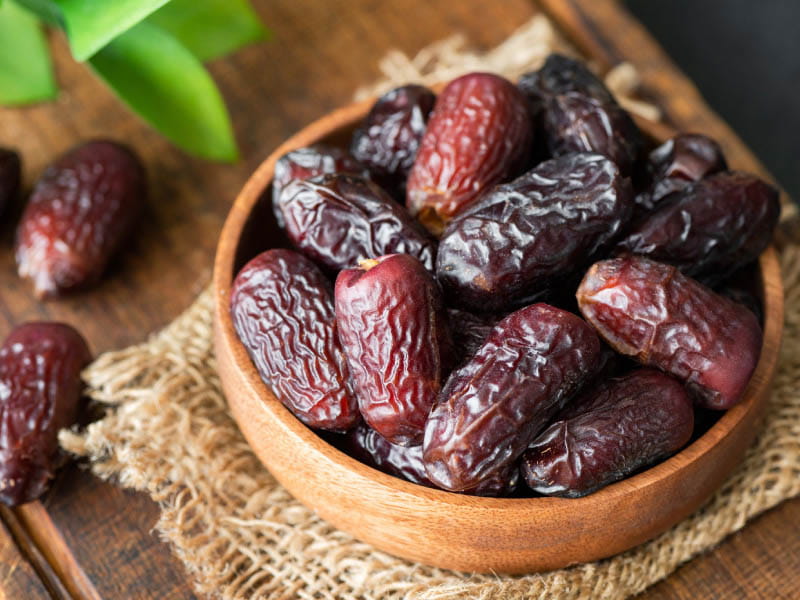What's in a date? History, health and sweetness
By Michael Merschel, American Heart Association News

Dates have long been a snack full of sweetness and significance.
Cultivated for at least 6,000 years, the palm date tree plays a role in several religious faiths. Among Muslims, a taste of date is given to infants as a ceremonial first meal, and the fruit is prominent during Ramadan, a month for fasting from sunrise to sunset.
"It's customary for Muslims all around the world to break their fast with dates and water, or dates and milk," said Sara Elnakib, chair of the department of family and community health sciences at Rutgers University in New Brunswick, New Jersey. She has a doctorate in public health education.
Their combination of fiber, nutrients and energy mean dates are "a great way to break your fast," she said. And as a snack for other times, they're "on the healthier side."
Around the world, you'll find thousands of varieties of dates. In the United States, you're most likely to encounter the plump medjool or the smaller Deglet Noor.
Their flavor and nutritional profiles vary, but overall, dates tend to be good sources of fiber, vitamin B and minerals such as potassium and magnesium, Elnakib said.
According to the U.S. Department of Agriculture, one medjool date (weighing in at a little less than 1 ounce) would have more than 4% of the recommended daily allowance of vitamin B-6 for adults. It also would provide almost 5% of the recommended potassium for men and more than 6% for women. Potassium is important for controlling blood pressure.
One medjool date also offers about 4% of the recommended magnesium for women, and about 3% for men. Dates also are a good source of antioxidants, Elnakib said.
That one date also has 1.6 grams of fiber, around 5% of an adult's needs, which also helps balance the effects of the 16 grams of total sugar in each date.
Elnakib said because of the high fiber content in dates, they end up having a low glycemic index, a measure of how fast blood sugar rises after food is digested.
Such sweetness does come with calories: 66 per medjool date – which can add up.
Elnakib recalls one woman who would break her Ramadan fast by eating 10 dates. "And then she was complaining that she was gaining weight during Ramadan. I was like, 'You know, maybe don't break your fast with 10 dates.'"
Still, Elnakib is a fan. Her family originated in Egypt, where chopped dates are boiled with milk. "It's similar to rice pudding, but not as gelatinous," she said. At the end of Ramadan, on the holiday of Eid al-Fitr, she'll enjoy a shortbread-style cookie with date paste, a food that can trace its history to the time of the pharaohs.
Keep in mind that dates by themselves don't make a dessert healthy. And even eaten alone, you have to be mindful of how many dates you consume, Elnakib said. "Because they're so sweet, and they're not that big, it's easy to eat a lot of them."
Some people enjoy dates pitted and stuffed with heart-friendly almonds. They also are handy to have in the car, Elnakib said. She might munch on three or four if she's hungry and stuck in traffic.
Overall, she considers dates to be "a really great healthy snack," and not just for special occasions. "You can have them every day."





